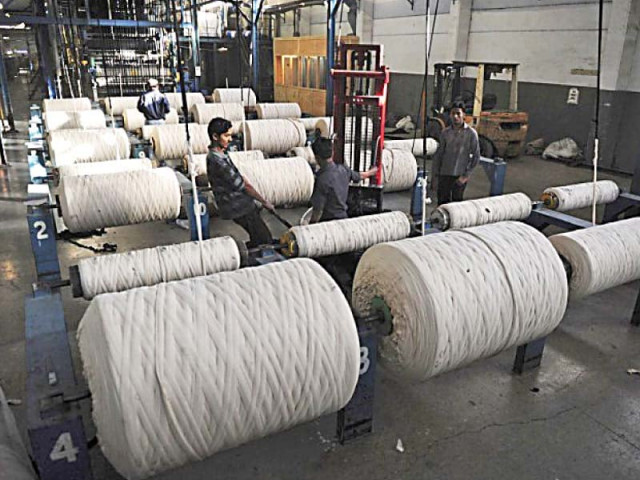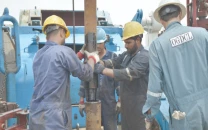Textile exports drop 2% as production cost rises
If cost increases, exporters are unable to pass the impact on to consumers

Textile exporters will struggle in the days ahead in the current fiscal year 2018-19 as cotton sowing target has been missed. PHOTO: FILE
The fall in June’s textile exports, which account for around 60% of Pakistan’s total overseas sales, has been attributed to more expensive cotton this year and heavy sales in June last year.
Textile exports were recorded at $1.19 billion in June 2018, down 2% on a year-on-year basis compared to $1.22 billion worth of shipments in the same month of 2017.
According to JS Research analyst Ahmed Lakhani, the decline in exports was primarily the result of a significantly higher cotton price that went up in the past one year from around Rs6,500 per maund (37.324kg) to Rs9,500.
“The international market is highly competitive and if cost increases, our textile exporters will be unable to pass on the impact,” Lakhani told The Express Tribune.
“Cotton price has increased 22% in the world market, but in Pakistan, it has gone up nearly 40% due to rupee depreciation during the last year.”
A 22% rupee depreciation since Dec 2017 has made it lucrative for cotton dealers to export, which pushes up the price of the commodity in the domestic market.
2011 to 2017: Textile, clothing exports fall 10% in six years
For the last one and a half year, the government has been trying to boost exports and has extended the Prime Minister’s Export Package in an effort to restrict the fast growing current account deficit and support falling foreign currency reserves, which have depleted to an alarming level of $9.06 billion.
Lakhani added that in June last year sales swelled because of clearance of a backlog of May 2017 when goods transporters went on strike against a court ruling that stopped them from coming on roads during day time.
Owing to the crisis, according to media reports, the industry claimed that on average about Rs6 billion was lost in exports every day.
In June this year, exports of cotton yarn and cotton cloth grew, but value-added categories such as garments, towels and bedwear underperformed and all of them recorded a decline in shipments. In the full fiscal year 2017-18, textile exports came in at $13.53 billion compared with $12.45 billion in 2016-17, recording an increase of 8.67%. In rupee terms, the hike in exports was calculated at 14.15% following Pakistani rupee’s massive depreciation.
Textile exporters will struggle in the days ahead in the current fiscal year 2018-19 as cotton sowing target has been missed.
In addition to that, duties and taxes have been re-imposed on cotton imports, which will be costlier, also due to the US dollar’s strengthening against the rupee. In the meantime, expensive re-gasified liquefied natural gas (LNG) has forced the closure of several small mills in Punjab.
“Spinners are expected to partially pass on the rise in cotton prices to the domestic market due to higher demand for yarn. But value-added goods manufacturers such as Nishat Mills, which has bulk of its sales, say 75%, in overseas markets, will not be able to pass on the impact to competitive export markets,” said Lakhani.
However, textile goods exporter Zubair Motiwala believes exports will get better in the future.
“There had been several factors in June this year that may have reduced sales including low productivity in Ramazan, Eid holidays and the backlog at the close of financial year. I believe textile sales will get better,” he said.
Published in The Express Tribune, July 26th, 2018.
Like Business on Facebook, follow @TribuneBiz on Twitter to stay informed and join in the conversation.



















COMMENTS
Comments are moderated and generally will be posted if they are on-topic and not abusive.
For more information, please see our Comments FAQ